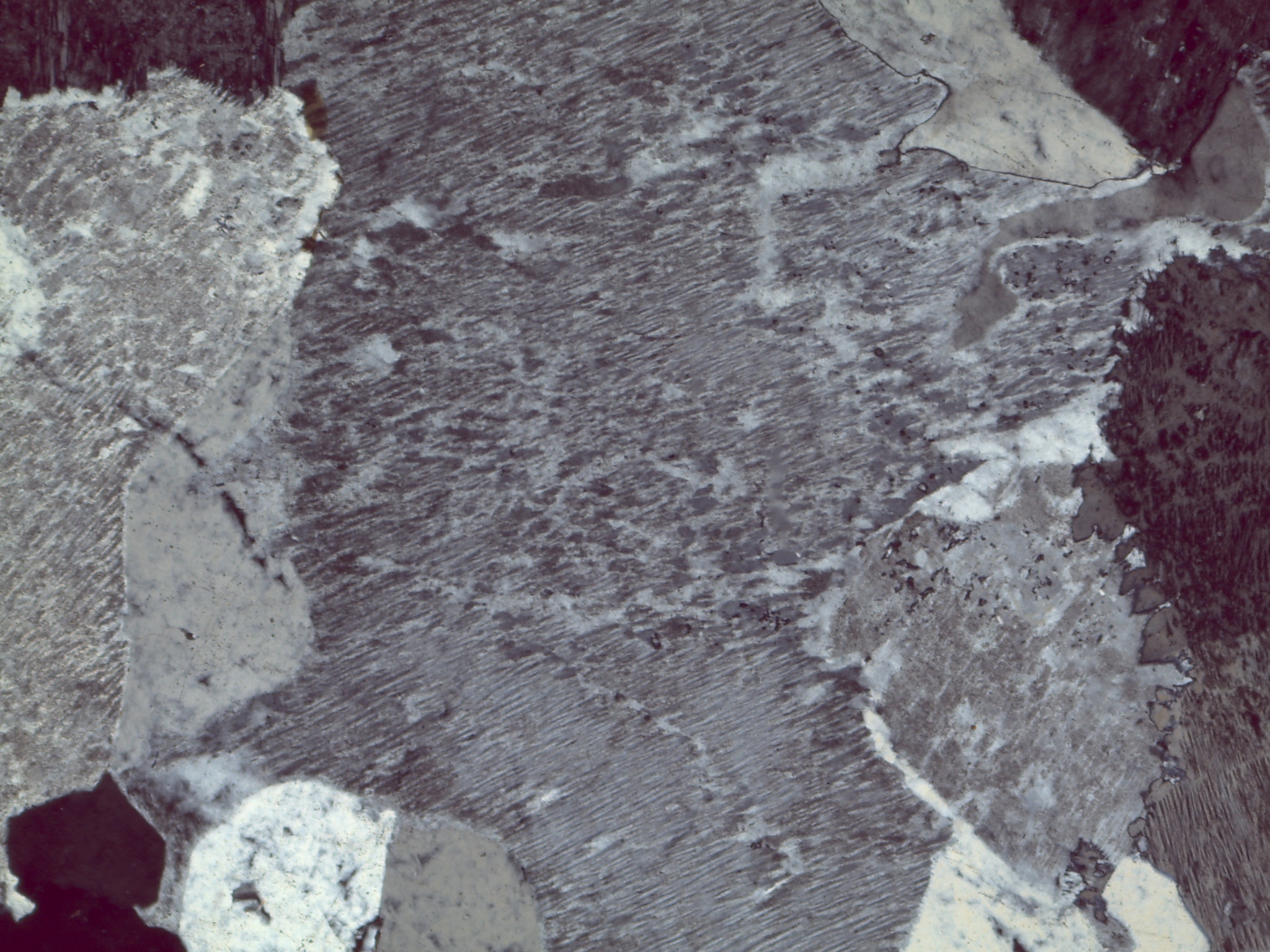Orthoclase is frequently known as potassium feldspar or K-spar, and is easily distinguished from the plagioclase feldspars in hand sample by its lack of striations.
In thin section, alkali feldspar grains often look like they’re sprinkled with dirt (PPL) or tiny confetti (XPL). You can find the explanation on the alkali feldspar page.
Physical Properties |
|
| Chemical formula | KAlSi3O8 |
| Class | Tectosilicate 3D framework of linked tetrahedra |
| Crystal system | Monoclinic |
| Habit | Prismatic Stubby to elongate May be flattened or doubly terminated |
| Color | White Pink, salmon Turbid |
| Hardness | 6 |
| Specific gravity | 2.56 |
| Cleavage | 90° cleavage angle; perfect (001), good (010), poor {110} |
| Fracture | Uneven |
| Luster | Pearly Vitreous |
| Transparency | Translucent |
| Streak | White |
Optical Properties |
|
| PPL | Colorless Non-pleochroic Low relief If altered, may display brownish speckling or clouding |
| XPL | 1st order gray Uneven stripes or “wisps” If altered, may look colorfully speckled |
| δ | 0.007 |
| Twinning | Penetration and contact twins are common. |
| after Perkins, 306 |
Orthoclase in Hand Sample
Classic peachy-pink orthoclase
More classic peachy-pink orthoclase
Orthoclase with green apatite
Scanning electron micrograph or orthoclase
Orthoclase in Thin Section
Thin Section GigaPans
Thin section, plane polars
Thin section, crossed polars

